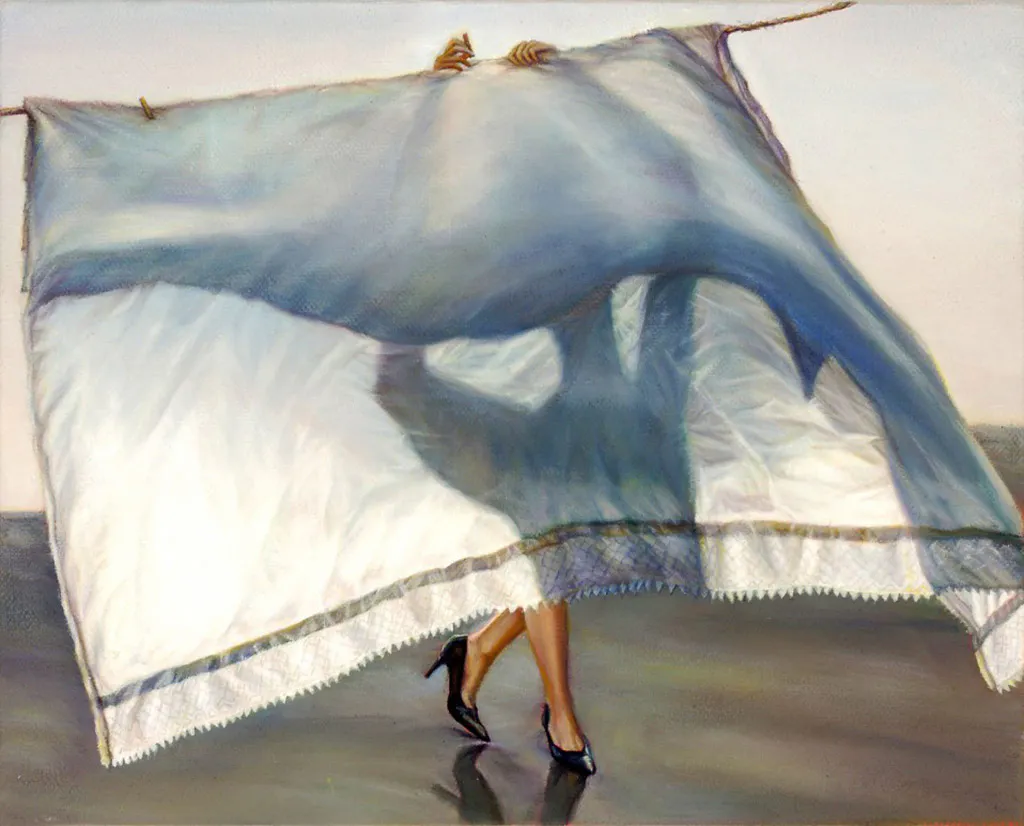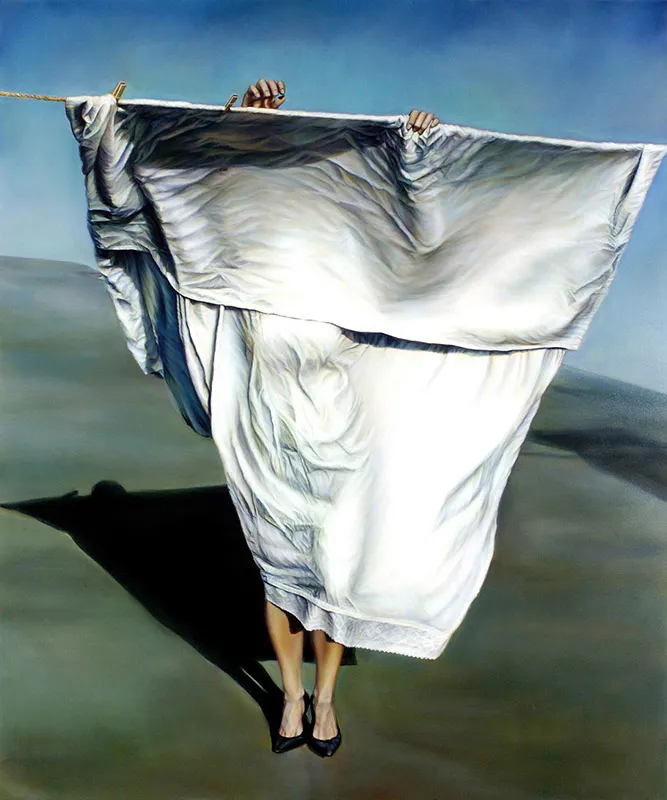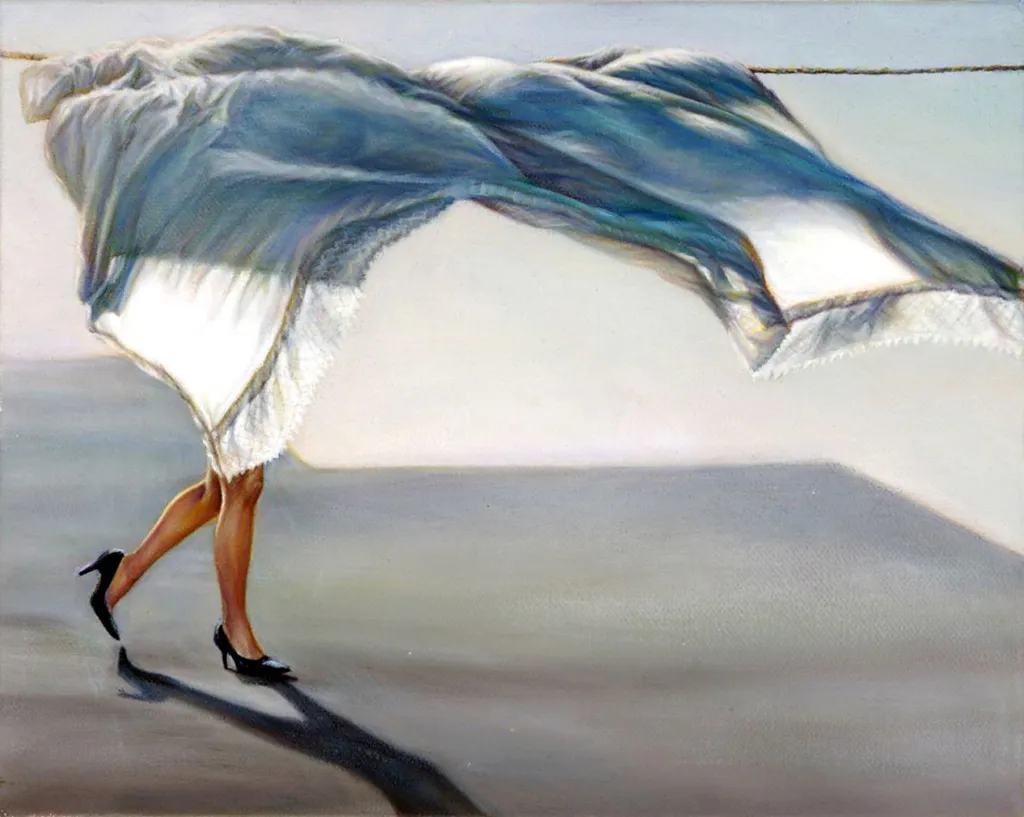Telaraña
Confronting Fernandez’s paintings can be awkward. Should be awkward. The in-your-face sexuality of her hyper-femme stage persona, a theatrical stilettoed amazon straddling ironing boards or writhing wet-haired across the floor, is not only a smart comment on the very particular but unspoken type of masculinity that characterizes much conceptual photography and performance documentation of the late 1960s and 1970s (think of those iconic images of a brooding Smithson in tight black jeans), it also points to the necessity of confronting an increasingly anodyne media culture. It’s commonplace by now to remark that our self-image is caught up in a circuitry of commodified desires, powered and sustained by an incessant stream of pleasurable images: “Every cigarette, every drink, every love affair echoes down a never-ending passageway of references—to advertisements, to television shows, to movies—to the point where we no longer know if we mimic or are mimicked,” critic Thomas Lawson once remarked. Things too real to deal with become digestible fantasy. Fernandez’s paintings heighten the awkwardness of the real, often to the level of discomfort, and temporarily snap you out of that palliative stupor. Awkward is good. Real is good.



